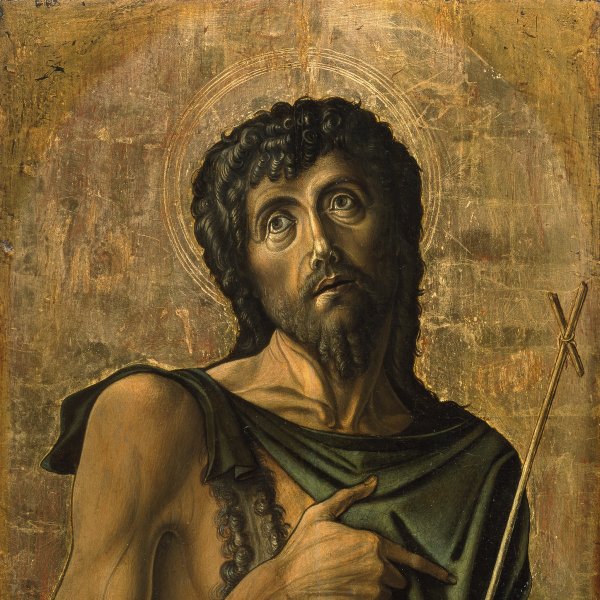Alvise Vivarini
Venice, 1442/43-1503/5
The Vivarini were a family of Venetian painters. Son of Antonio and nephew of Bartolomeo, Alvise trained in the family workshop. His style is based on the linearity, compositional models and iconography used by other family members, particularly at the outset of his career. Alvise’s style evolved and reveals his knowledge of the work of Giovanni Bellini, Antonello da Messina and Andrea Mantegna, and his early works look to Mantegna’s clearly defined forms and definition of space. Vivarini’s figures became notably well modeled although he continued to use hard, exaggerated outlines, albeit softened by the interaction between the figures.
Following his training in Venice, Vivarini’s first work as an independent painter is a polyptych painted for the convent of Montefiorentino of 1476 (Galleria Nazionale delle Marche, Urbino). Also from this period is Saint Jerome (National Gallery of Art, Washington), a painting that reflects an evolution in his style as well as the work of Bellini in the treatment of the light and landscape. In the 1480s Vivarini replaced his linear approach with a more volumetric style in which the light defines and models the figures. During this period he focused on the theme of the Sacra Conversazione, in which he was notably innovative, using the traditional horizontal format to investigate Renaissance principles of spatial construction, while the figures and light are imbued with a remarkably poetic quality. From the 1590s onwards Vivarini focused his activities on Venice, where he participated in the decoration of the Scuola di San Marco. The Risen Christ of 1498 in the church of San Giovanni in Bragora in Venice is a clear example of his late style in which the figures are painted in a more dynamic manner. Influenced by Antonello da Messina, Vivarini also painted portraits, including Portrait of a Man in the National Gallery, London.
Following his training in Venice, Vivarini’s first work as an independent painter is a polyptych painted for the convent of Montefiorentino of 1476 (Galleria Nazionale delle Marche, Urbino). Also from this period is Saint Jerome (National Gallery of Art, Washington), a painting that reflects an evolution in his style as well as the work of Bellini in the treatment of the light and landscape. In the 1480s Vivarini replaced his linear approach with a more volumetric style in which the light defines and models the figures. During this period he focused on the theme of the Sacra Conversazione, in which he was notably innovative, using the traditional horizontal format to investigate Renaissance principles of spatial construction, while the figures and light are imbued with a remarkably poetic quality. From the 1590s onwards Vivarini focused his activities on Venice, where he participated in the decoration of the Scuola di San Marco. The Risen Christ of 1498 in the church of San Giovanni in Bragora in Venice is a clear example of his late style in which the figures are painted in a more dynamic manner. Influenced by Antonello da Messina, Vivarini also painted portraits, including Portrait of a Man in the National Gallery, London.





